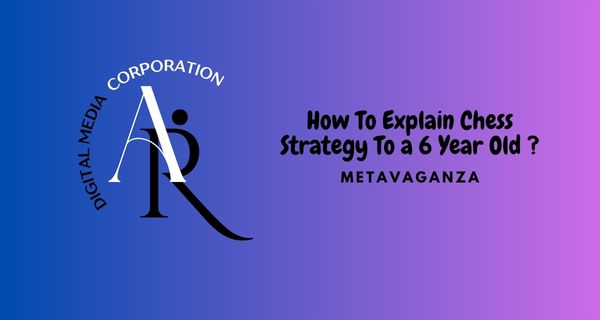CRM : How To Explain Chess Strategy To a 6 Year Old ? – Chess is a fascinating game that can teach valuable skills such as critical thinking, problem-solving, and strategic planning. However, explaining chess strategy to a 6-year-old can be a challenge.
In this article, we will explore effective ways to introduce chess strategy to young children, making it enjoyable and understandable for them.
How To Explain Chess Strategy To a 6 Year Old ?
According Gnews, Chess is a centuries-old game that requires a combination of logical thinking and tactical decision-making. By introducing chess strategy to a 6-year-old, we can nurture their cognitive abilities and enhance their problem-solving skills from an early age.
1. Understanding Chess Basics
Before delving into strategy, it’s essential to ensure the child understands the basic rules and movements of the chess pieces. Start by explaining how each piece moves on the board, including the pawn, rook, knight, bishop, queen, and king.
2. Breaking Down Chess Strategy
Chess strategy revolves around making the right moves and plans to outmaneuver the opponent. Break down the concept of strategy into simpler terms for the child to grasp. Explain that strategy involves thinking ahead, considering various options, and making decisions based on the current position.
3. Explaining Piece Movements
Emphasize the individual movements of each piece. For instance, explain that pawns move forward but capture diagonally, while the rook moves horizontally and vertically. Make sure to illustrate these movements on a physical chessboard or a chess app for better understanding.
4. Emphasizing the Importance of King Safety
Teach the child the importance of protecting the king. Explain that the objective of the game is to checkmate the opponent’s king, and if their own king is in danger, they should take necessary steps to safeguard it.
5. Teaching the Value of Controlling the Center
Highlight the significance of controlling the central squares of the chessboard. Explain that having control over the center allows for better mobility and the ability to launch attacks from a stronger position.
6. Introducing Tactical Moves
Introduce basic tactical moves such as forks, pins, and skewers. These concepts may be simplified by relating them to real-life scenarios or using colorful visuals to make them more engaging and memorable.
7. Discussing Checkmate
Explain the concept of checkmate as the ultimate goal in chess. Teach the child that checkmate occurs when the opponent’s king is under attack and has no legal moves to escape capture.
8. Exploring Opening Principles
Discuss the fundamental principles of openings, such as developing the pieces, controlling the center, and protecting the king. Explain that following these principles increases the chances of a good start in a game.
Related Article : What Would Be the Possible Solutions to the Negative Impact Caused by Human Activities in the River?
9. Understanding the Concept of Development
Elaborate on the concept of piece development and its importance. Teach the child that developing pieces means bringing them out from their starting positions to more active and influential squares.
10. Teaching the Role of Pawn Structure
Introduce the child to the significance of pawn structure. Explain how the pawn structure can influence the game, create weaknesses, and provide opportunities for strategic play.
11. Introducing the Importance of Piece Coordination
Explain the concept of piece coordination, where different pieces work together to achieve common goals. Illustrate examples of how well-coordinated pieces can create threats and control key squares on the board.
12. Explaining Endgame Concepts
Simplify endgame concepts such as pawn promotion, stalemate, and zugzwang. Demonstrate scenarios that depict these concepts to enhance the child’s understanding of endgame strategies.
13. Encouraging Practice and Patience
Emphasize the importance of practice and patience in improving chess skills. Encourage the child to play regularly, solve puzzles, and analyze their games to develop a deeper understanding of chess strategy over time.
Conclusion
In conclusion, introducing chess strategy to a 6-year-old requires breaking down complex concepts into simpler terms. By starting with the basics, explaining piece movements, and gradually exploring more advanced strategies, children can begin to appreciate the beauty and logic of the game. Encourage them to enjoy the learning process, be patient with themselves, and embrace the values that chess instills.
FAQs
1. Can a 6-year-old really understand chess strategy?
Yes, a 6-year-old can grasp the fundamentals of chess strategy if it is presented in an age-appropriate and engaging manner. Start with simple concepts and gradually introduce more advanced strategies as the child progresses.
2. How long does it take for a child to become good at chess?
The time it takes for a child to become proficient in chess varies from person to person. Regular practice, exposure to different strategies, and participation in chess tournaments can significantly contribute to their progress.
3. Are there any benefits of teaching chess to young children?
Yes, teaching chess to young children offers various benefits. It enhances critical thinking, improves concentration and memory, develops problem-solving skills, and fosters strategic thinking abilities.
4. Should I let my child play chess online?
Playing chess online can be a valuable learning tool for children. However, it’s crucial to monitor their online activities and ensure they engage in a safe and age-appropriate chess environment.
5. How can I make chess more enjoyable for my child?
To make chess more enjoyable for your child, incorporate fun learning activities, play chess variants, and encourage them to participate in friendly matches with other children. Remember to celebrate their progress and create a positive learning environment






[…] Related Article : How To Explain Chess Strategy To a 6 Year Old? […]